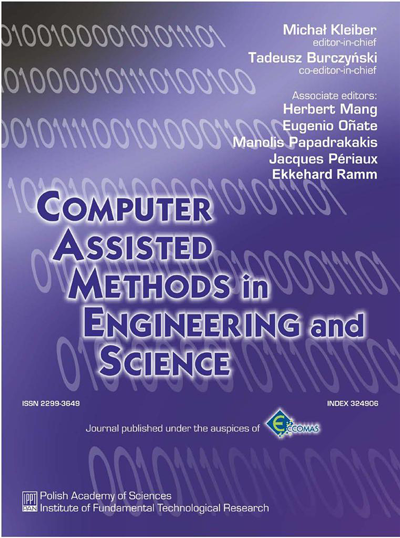Computer-based simulation of plasma concentration time-profiles of drug in nonlinear two-compartment model
Abstract
The main interest of pharmacokinetics is the study of the fate of drugs in the living organism. This work proposes the system of the conservation laws that describes time-dependent concentrations of a drug, after a single intravenous administration. Compared with others, the proposed model considers both free and protein-bound drug concentrations at the same time. Plasma protein binding captured in the model enters the nonlinearity arising from the Guldberg-Waage law. According to our best knowledge, the analytical solution for our system does not exist. Our model allows the calculation of the free and bound-drug protein concentrations at any time point and at any dose after single intravenous bolus dose administration. In order to compare the empirical with simulated data, a numerical approach has been proposed. On the basis of published experimental data the model validation has been carried out. The goodness of fit was satisfactory (R² = 0.99) and the experimental and simulated AUC (area under the curve) values, as the measure of the bioavailability of drug, were similar (150 M/hxh-¹). The preliminary assessment of the model credibility was positive and encouraged further studies.
Keywords
evolution equations, non-linear model, drug protein binding,References
[1] L.M. Berezhkovskiy. Some features of the kinetics and equilibrium of drug binding to plasma proteins. Expert Opin Drug Metab Toxicol, 4: 1479–1498, 2008.[2] L.M. Berezhkovskiy. Determination of hepatic clearance with the account of drug-protein binding kinetics. J. Pharm. Sci., 101(10): 3936–45, 2012.
[3] S. Bielawski. Pharmacokinetic models [in Polish]. WKiŁ, Warsaw, 1987.
[4] T. Bohnert, L.S. Gan. Plasma protein binding: from discovery to development. J. Pharm. Sci., 102(9): 2953–2994, 2013.
[5] M. Dickins, H.Waterbeemd. Simulation models for drug disposition and drug interactions. Biosilico, 2(1): 38–45, 2004.
[6] J. Gabrielsson, D. Weiner. Pharmacokinetic and pharmacodynamic data analysis: concepts and applications. Swedish Pharmaceutical Society, Stockholm, Sweden, 328–444, 2000.
[7] R. Gugler, G. Mueller. Plasma protein binding of valproic acid in healthy subjects and in patients with renal disease. Br. J. Clin. Pharmacol, 5(5): 441–446, 1978.
[8] R. Lobenberg, G.L. Amidon. Modern bioavailability, bioequivalence and biopharmaceutics classification system. New scientific approaches to international regulatory standards. Eur. J. Pharm. Biopharm, 50(1): 3–12, 2000.
[9] P.J. McNamara, G. Levy, M. Gibaldi. Effect of plasma protein and tissue binding on the time course of drug concentration in plasma. J. Biopharm. Biopharmaceutics, 7(2), 1979.
[10] JW. Mouton, MN. Dudley, O. Cars. Standardization of pharmacokinetic/pharmacodynamic (PK/PD) terminology for anti-infective drugs: an update. J. Antimicrob Chemother, 55(5): 601–607, 2005.
[11] E. Perucca, G. Gatti, G.M. Frigo, A. Crema. Pharmacokinetics of valproic acid after oral and intravenous administration. Br. J. Clin. Pharmac., 5: 313–318, 1978.
[12] R.G. Sargent. Verification and validation of simulation models. Journal of Simulation, 7: 12–24, 2013.
[13] D. Smith, L. Di, E. Kerns. The effect of plasma protein binding on in vivo efficacy: misconceptions in drug discovery. Nat Rev Drug Discov, 9(9): 929–939, 2010.
[14] M.J. Wolfsegger, T. Jaki. Assessing systemic drug exposure in repeated dose toxicity studies in the case of complete and incomplete sampling, Biometrical Journal, 51(6): 1017–1029, 2009.




